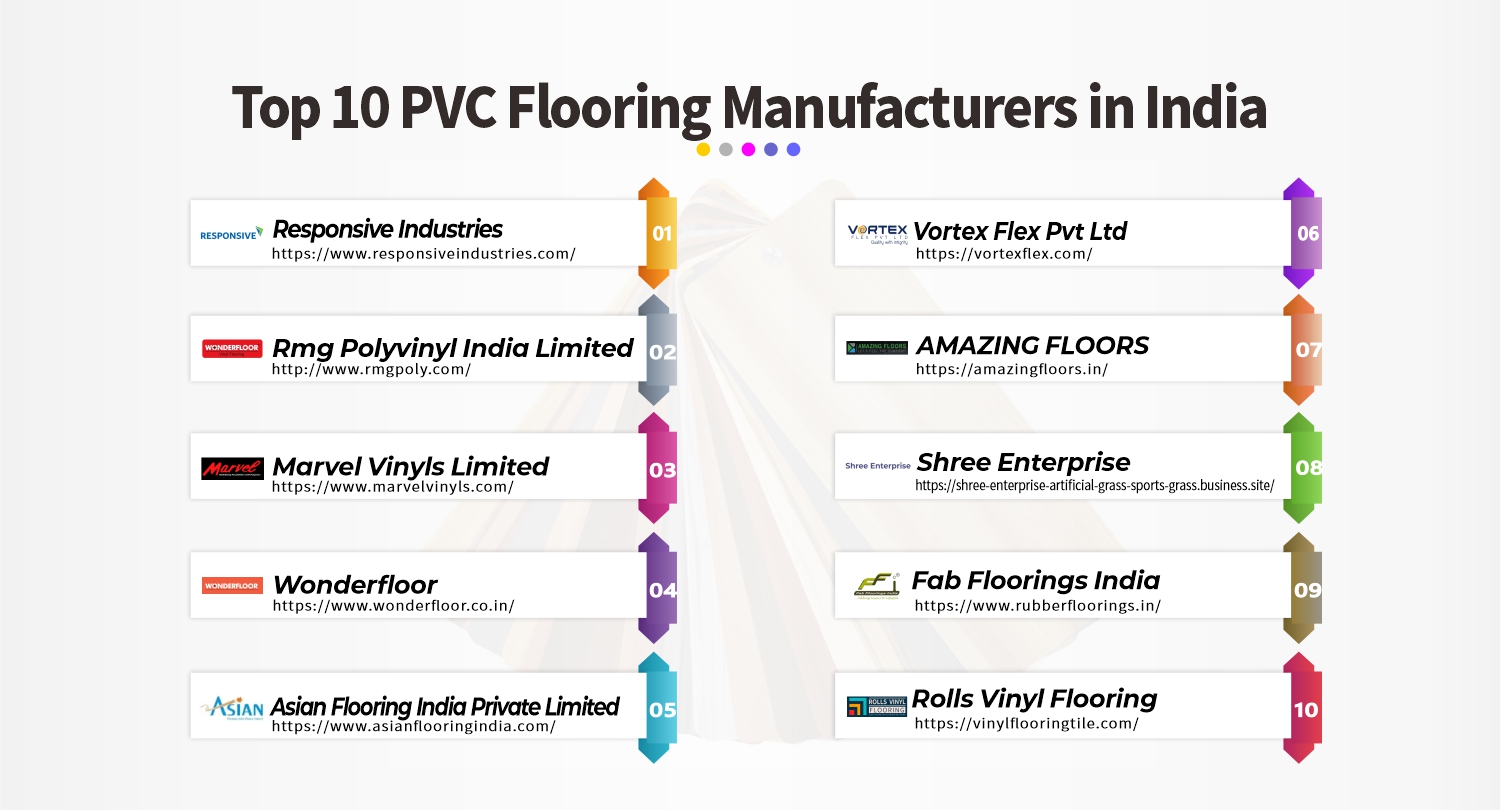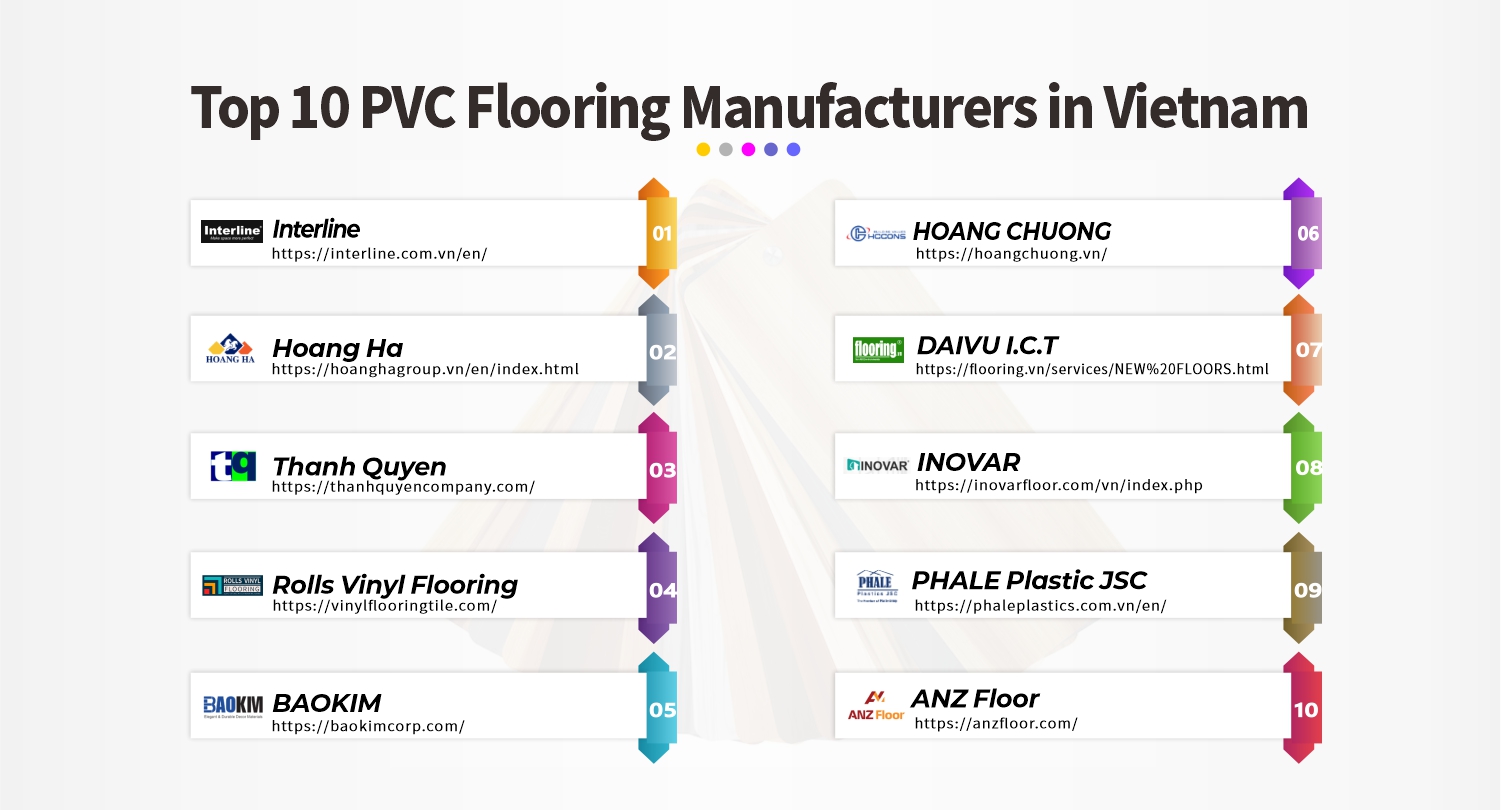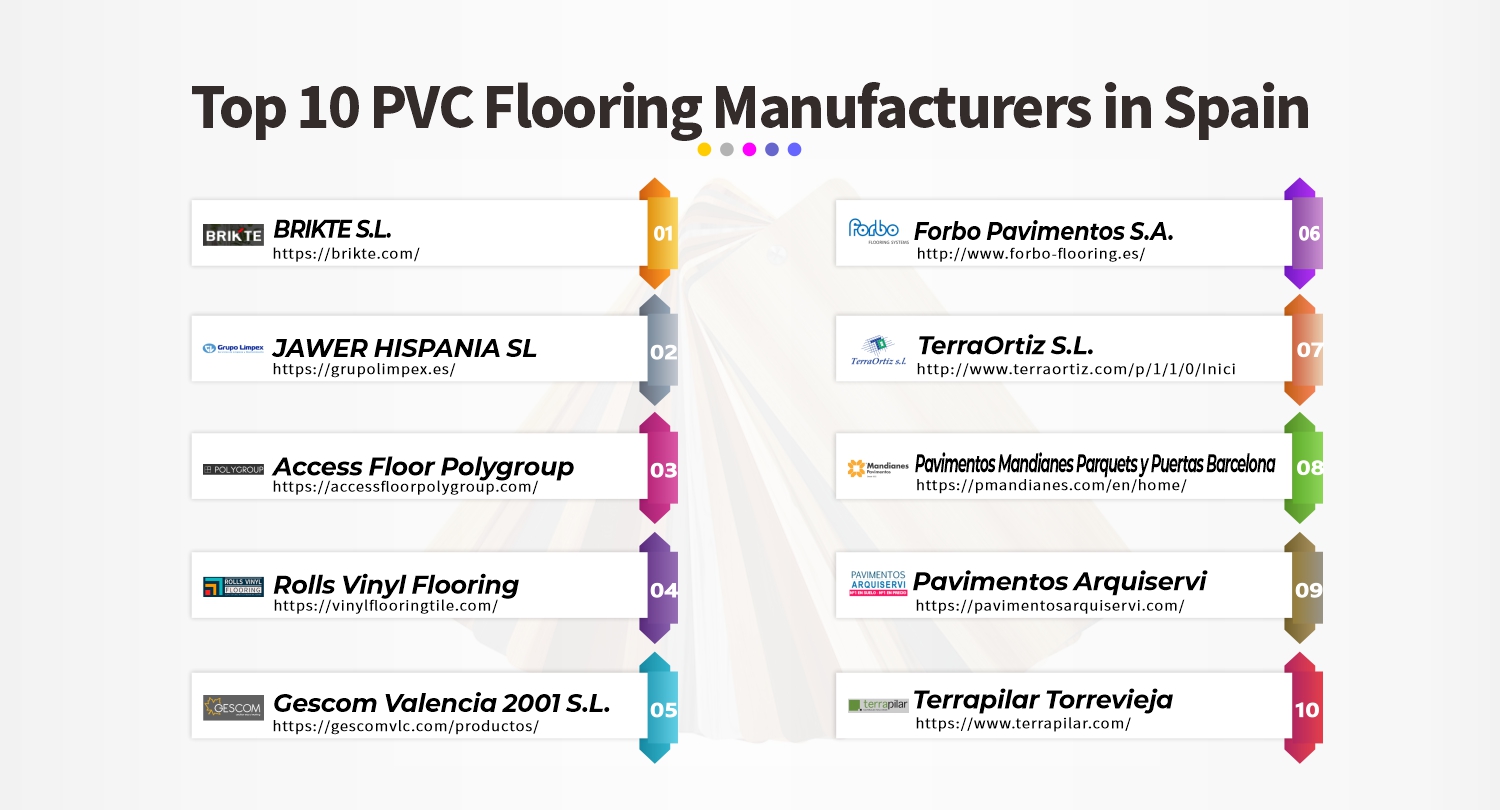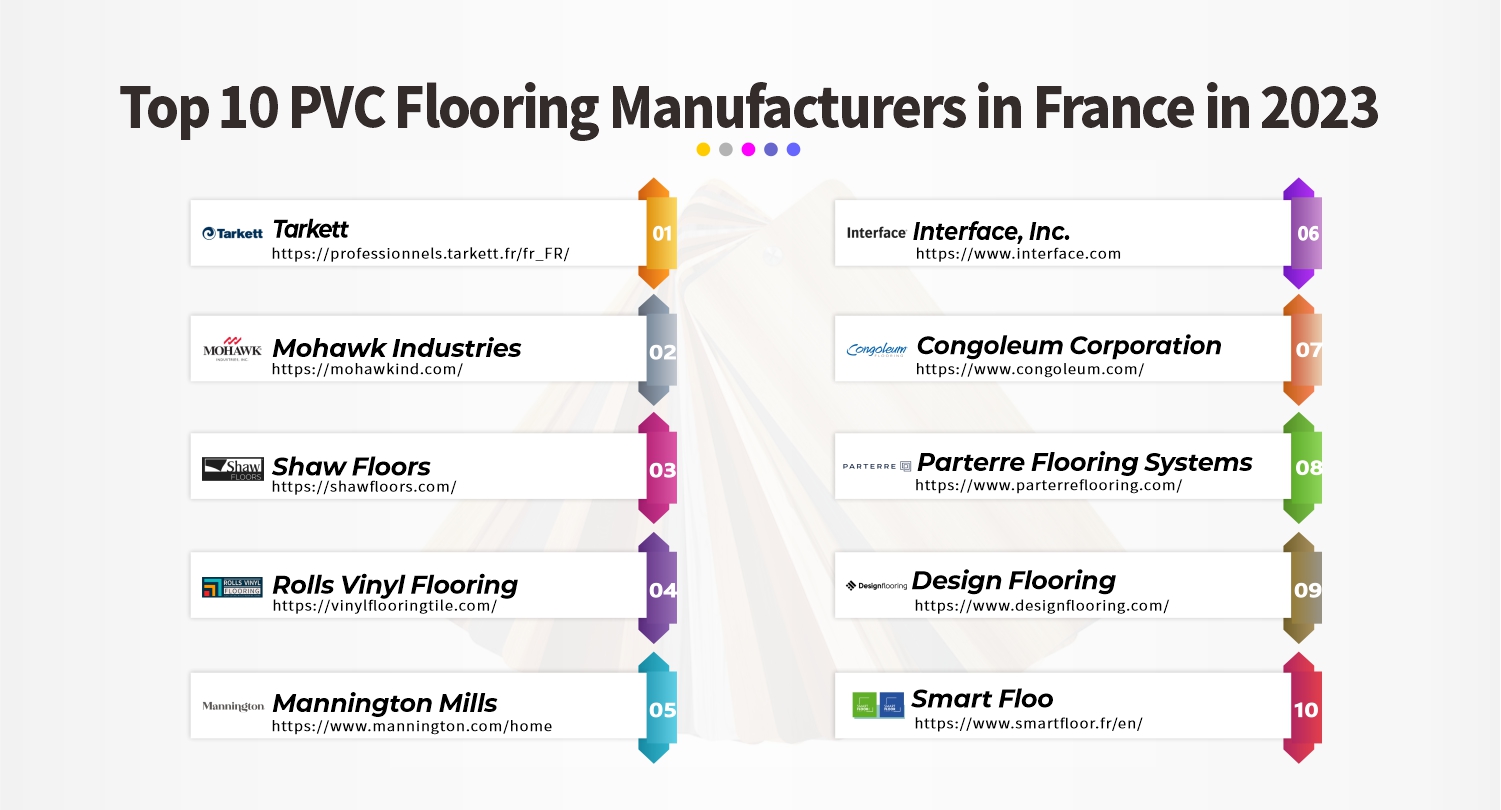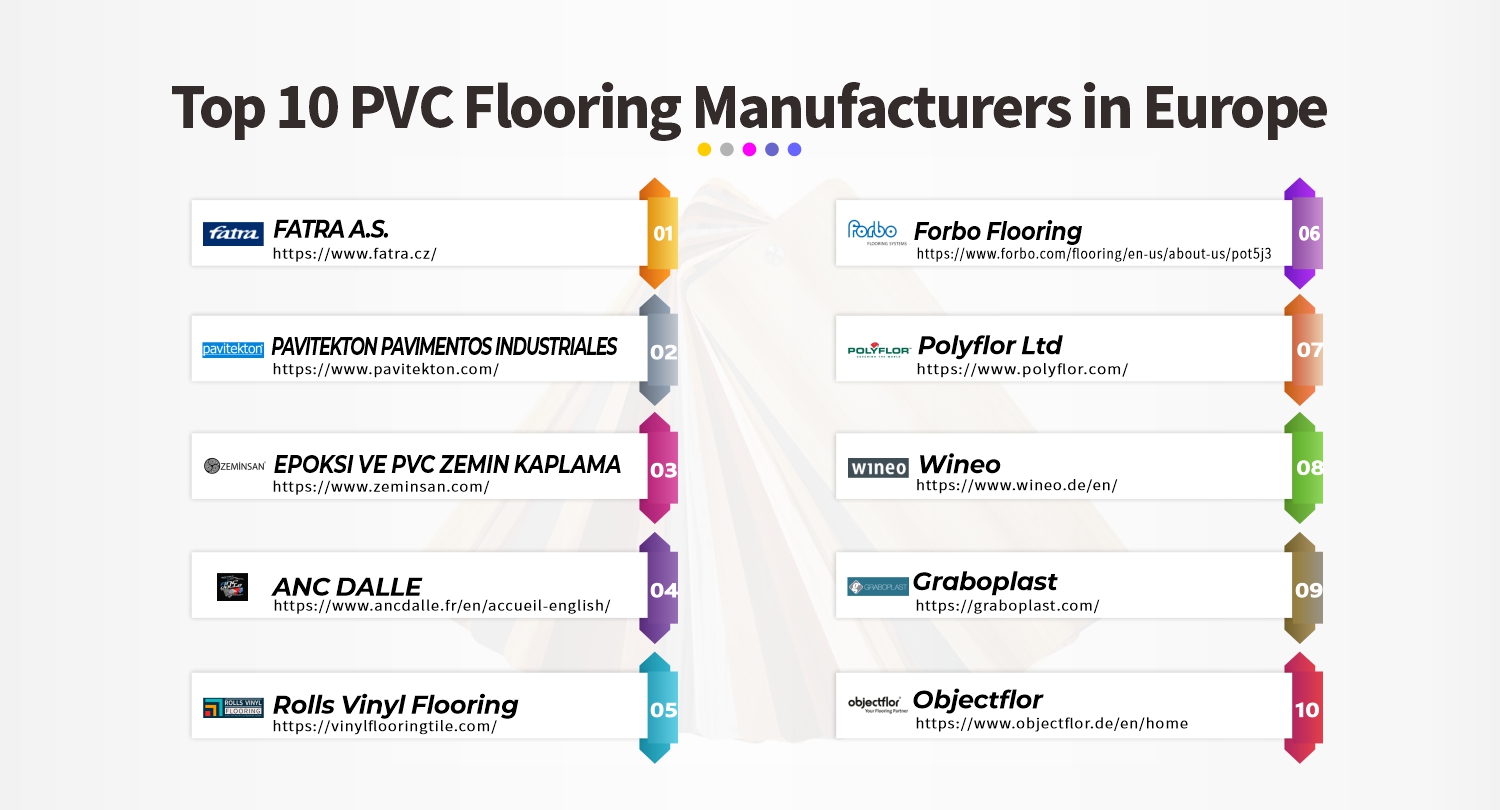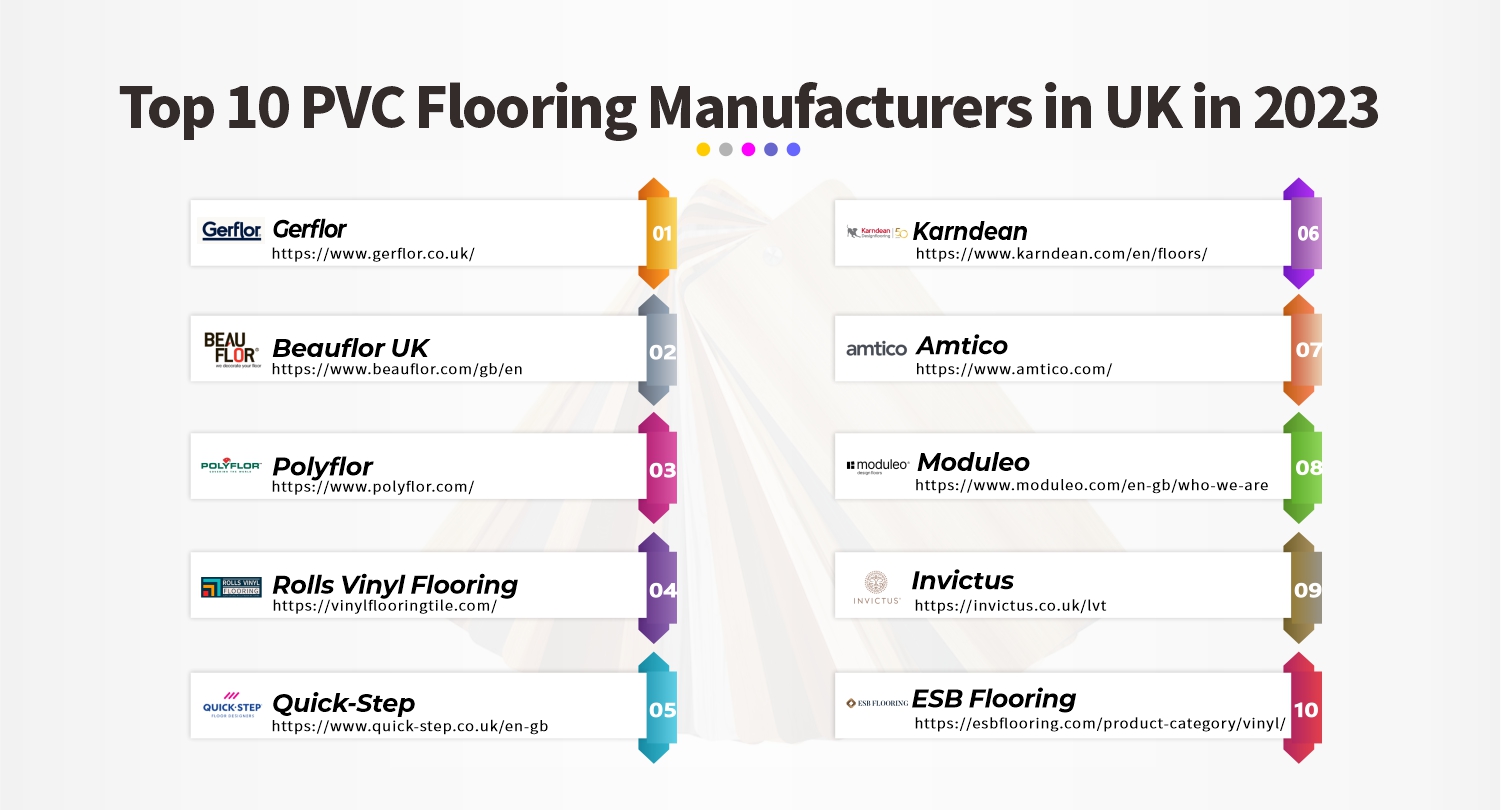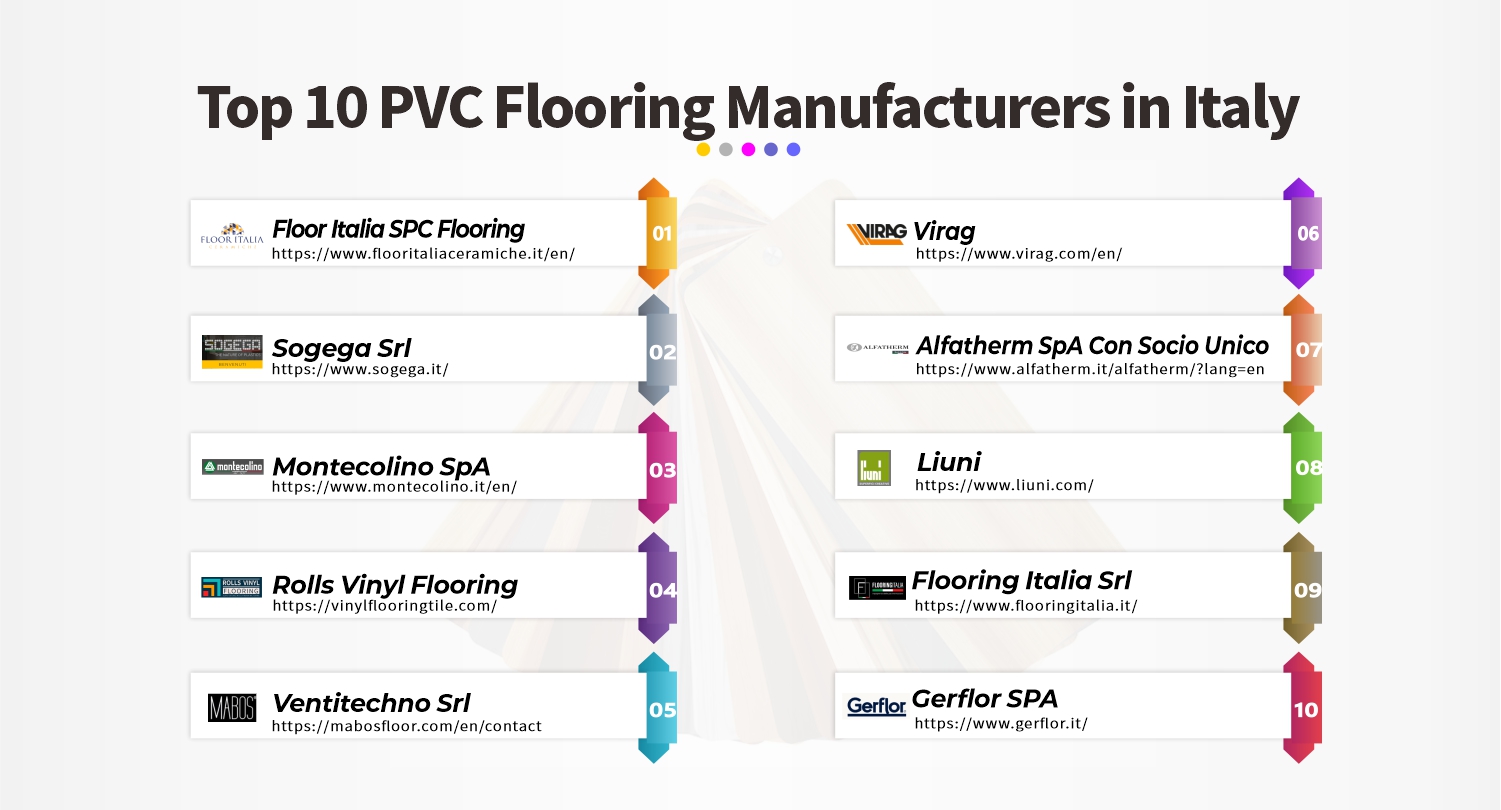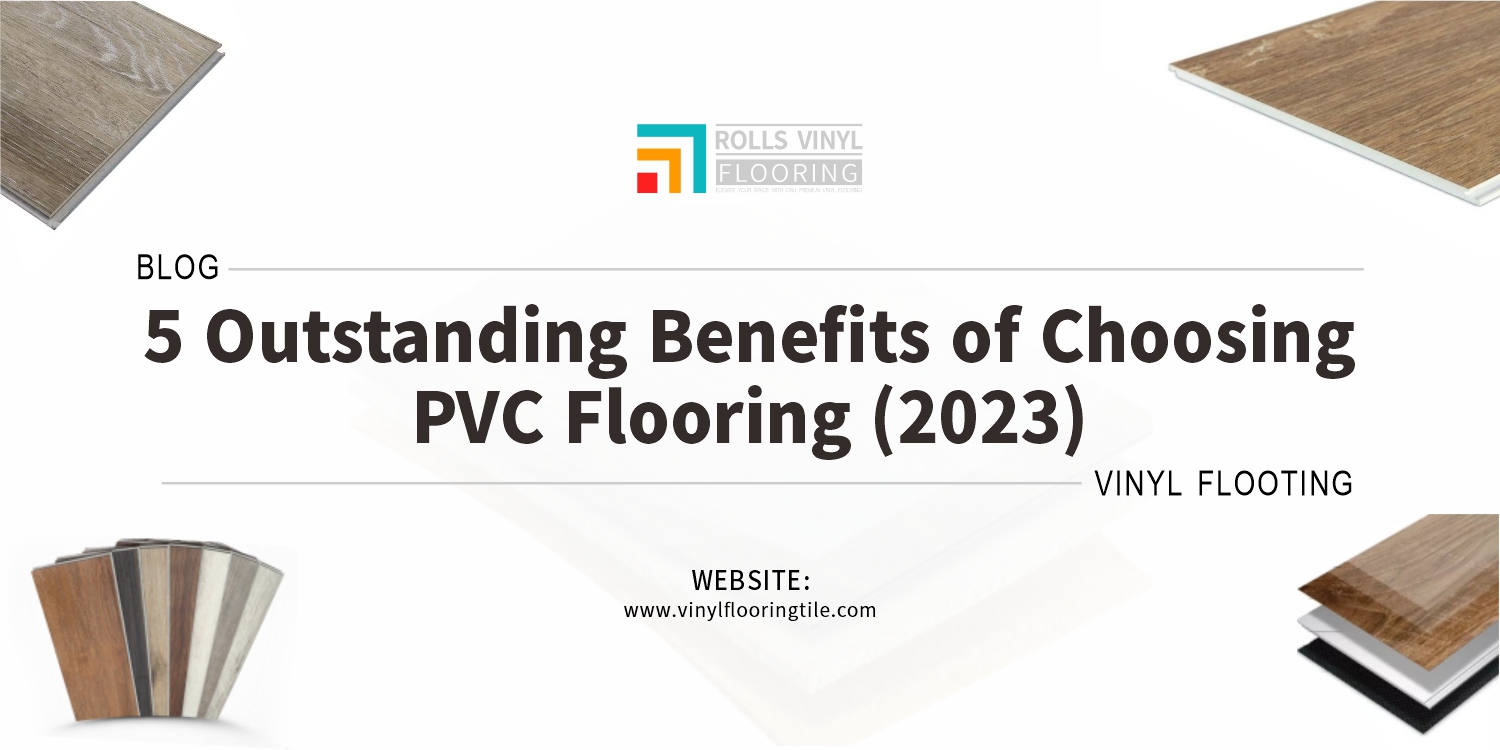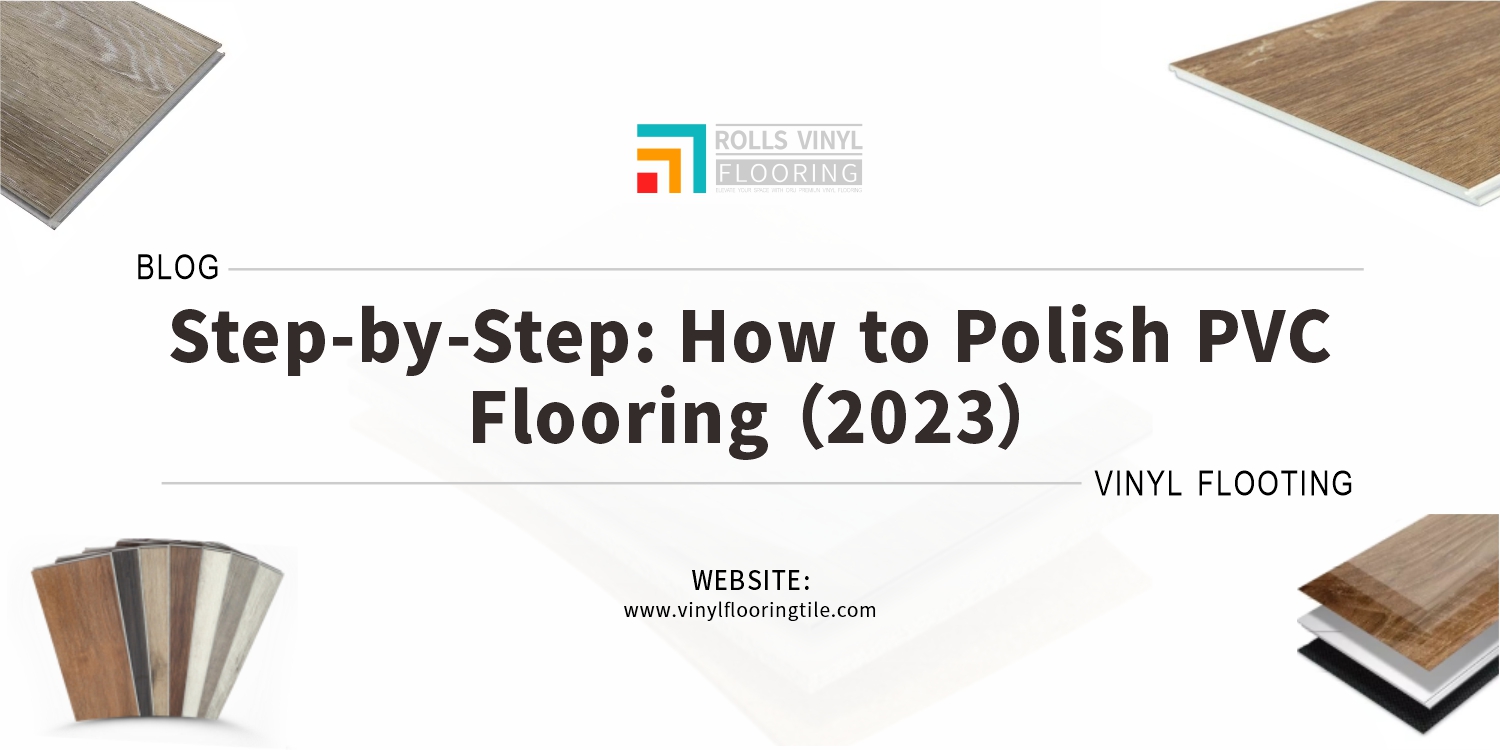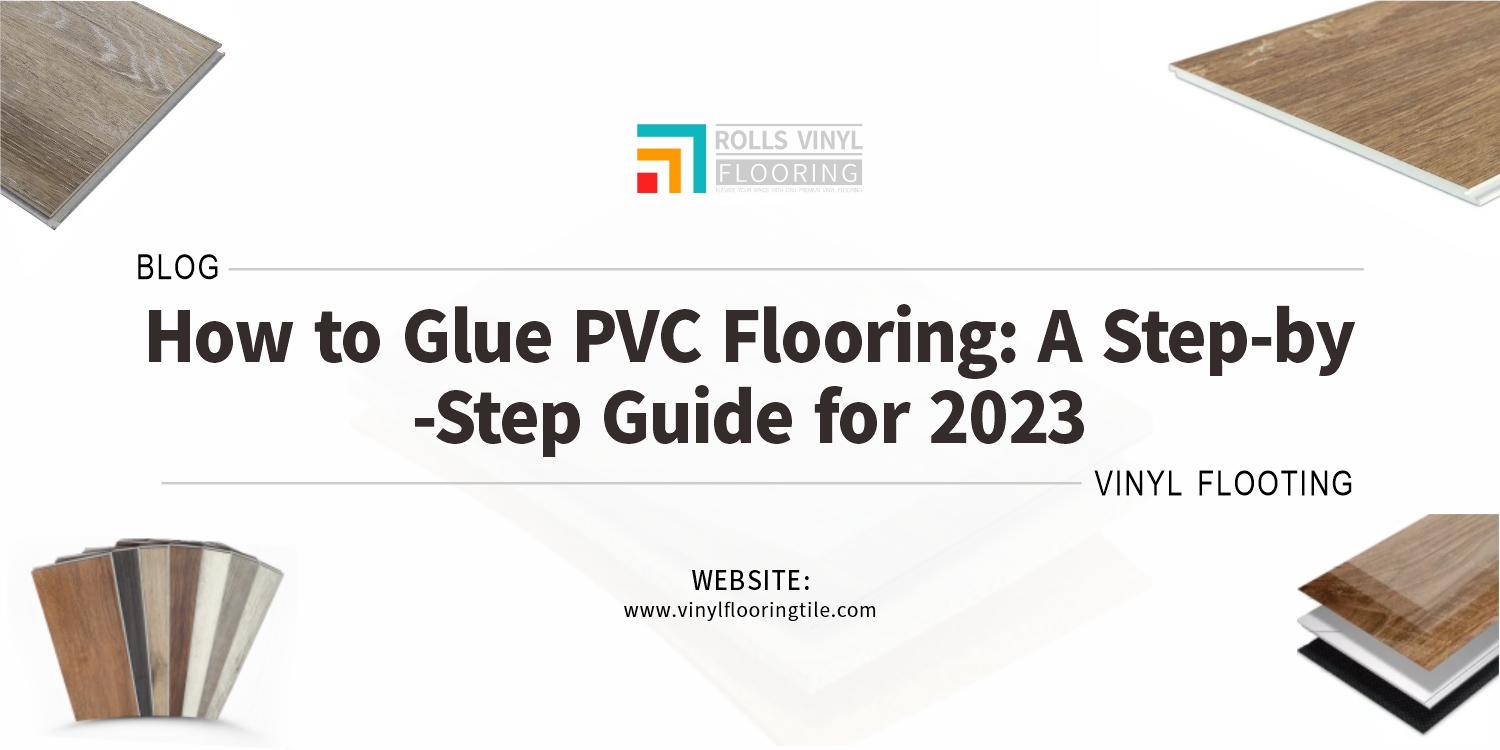Vinyl flooring is popular due to its adaptability, affordability, and resilience. Did you know that vinyl flooring may simulate the appearance of hardwood, tile, and stone?
Vinyl flooring is a resilient floor material composed of synthetic elements. It is available in various forms, including sheet, tile, and plank. Vinyl flooring has some benefits: durability, moisture resistance, simple upkeep, and cost-effectiveness. Vinyl flooring is available in fashionable patterns, hues, and textures that may compliment any interior style.
If you intend to upgrade or install new flooring in your home, this article will provide you with essential vinyl flooring information. Choose the sort of vinyl flooring best for your space by learning more about the several available varieties.
1. Introduction

A. Explanation of vinyl flooring
Vinyl flooring is an attractive and practical choice for homeowners on a budget. This cost-effective option comes in various colors, designs, and styles that mimic the look of materials like wood and stone at a fraction of the price. As a bonus, vinyl floors are tough and resistant to scratches and stains, providing superior durability for any house level – including basement spaces. Plus, you don’t have to worry about excessive noise underfoot or strenuous maintenance – keep your floor clean, and it will last for years! With its various benefits, vinyl flooring is an excellent option for anyone hoping to create a beautiful, long-lasting space without breaking the bank.
B. Importance of flooring in interior design
As the foundation of any space, flooring plays a significant role in interior design. In addition to serving a practical purpose, it also contributes to the aesthetic appeal of a place. The appropriate flooring can enhance the décor, create a unique ambiance, and even affect the room’s perceived size. Moreover, various flooring kinds may have different durability and care needs. For example, hardwood flooring is recognized for its resilience and can last for decades, but carpeting may require replacement every few years. In addition, the color and texture of the flooring can affect the mood of a space. Warm, inviting colors and textures can make a room feel cozy and welcoming, while cool tones and sleek finishes create a modern, sophisticated atmosphere. With its functional and aesthetic benefits, flooring is a critical component of interior design that should not be overlooked.
C. Purpose of the article
The article “Vinyl Flooring Demystified: A Look at the Different Types and Their Advantages” provides a comprehensive guide for consumers looking to install vinyl flooring in their homes or commercial spaces. The article also discusses the advantages and disadvantages of each type and their suitability for different settings and applications. In addition, the article provides valuable insights on the durability, maintenance, and installation considerations of vinyl flooring, enabling readers to make an informed decision when choosing the right flooring for their needs. Overall, the article is a valuable resource for anyone seeking to understand the nuances of vinyl flooring and make an informed choice for their flooring needs.
| Type | Description | Advantages | Disadvantages |
|---|---|---|---|
| Luxury Vinyl Tile (LVT) | LVT is a type of vinyl flooring that mimics the look of natural stone or ceramic tile. | Durable, water-resistant, easy to install and maintain, affordable. | May not look as realistic as real tile, can be slippery when wet. |
| Luxury Vinyl Plank (LVP) | LVP is a type of vinyl flooring that mimics the look of hardwood flooring. | Durable, water-resistant, easy to install and maintain, affordable, quieter and softer underfoot than real wood. | May not look as realistic as real wood, can be slippery when wet. |
| Sheet Vinyl flooring | Sheet vinyl is a type of vinyl flooring that comes in large rolls and is cut to size. | Affordable, easy to install, water-resistant, softer and warmer underfoot than tile or wood. | Limited design options, can be difficult to repair if damaged. |
| Vinyl Composition Tile (VCT) | VCT is a type of vinyl flooring that is often used in commercial settings. | Durable, affordable, easy to clean and maintain. | Limited design options, may need to be waxed or polished regularly. |
| Peel and Stick Vinyl | Peel and stick vinyl is a type of vinyl flooring that has an adhesive backing and can be easily installed without the need for glue or nails. | Easy to install, affordable, water-resistant. | May not be as durable as other types of vinyl flooring, can be difficult to remove if installed improperly. |
2. Sheet vinyl flooring
A. Description and features:
Sheet vinyl flooring is an excellent choice for homeowners looking to update the floor in their homes. It offers a stylish look while also being incredibly durable and low-maintenance. With a wide range of designs and colors, it can easily be customized to suit any room size or shape. It’s water resistance, and ability to withstand scratches and stains ensure you don’t have to worry about spills or wear and tear. Plus, it’s easy to install during DIY projects to create your unique flooring solution. For those on a tight budget but still want a quality result, sheet vinyl flooring is a perfect choice!
B. Advantages and disadvantages:
Sheet vinyl flooring is an excellent choice if you’re looking for an affordable and durable floor covering in areas with high foot traffic. Because it is also water resistant and ideal for use in wetter spaces such as bathrooms and kitchens. Moreover, cleaning and maintaining sheet vinyl requires little effort, making it a practical pick for easy upkeep. Despite its many benefits, there are some drawbacks to consider. Sheet vinyl can be especially vulnerable to discoloration when exposed to prolonged or direct sunlight, requiring careful placement in the home. Also, repairing damaged sections may be difficult due to the large area covered by individual sheets, necessitating full replacement of the affected part instead. Finally, PVC-based models may contain chemicals that may be potentially allergenic or off-gas until they have been given enough time to cure after installation.
C. Best applications and recommended usage:
Kitchens, baths, and laundry rooms are great for sheet vinyl flooring since they are susceptible to moisture and spills. It is also popular in high-traffic areas, such as living rooms and entryways. Sheet vinyl flooring can also be used in commercial applications, such as schools and hospitals, due to its durability and resistance to wear and tear. However, it may only be recommended for areas that receive a little direct sunlight, as it can be prone to discoloration.
3.Luxury vinyl tile (LVT)
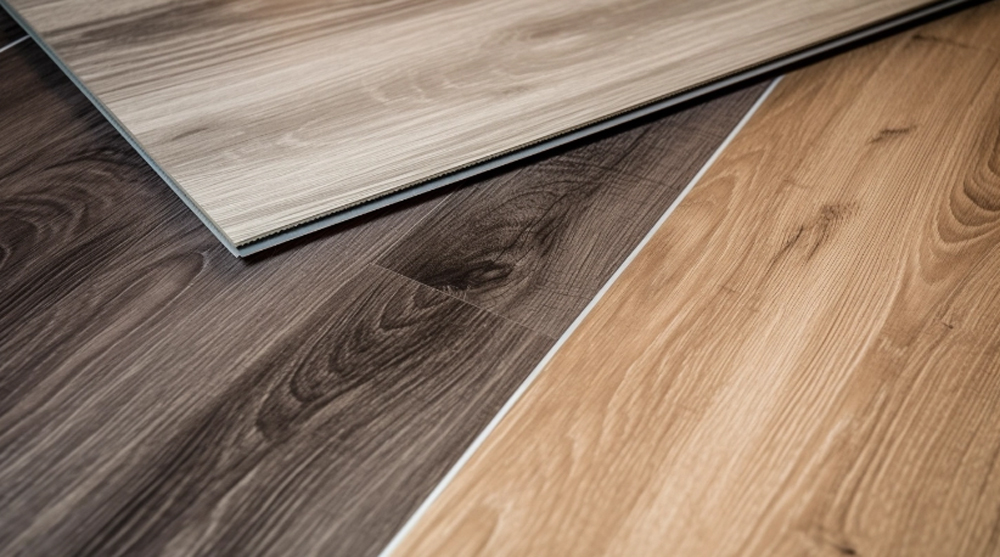
A. Description and Features:
Luxury Vinyl Tile (LVT) is a form of flooring that closely resembles real substances like stone and wood. It is constructed using layers of synthetic materials fused under high pressure and heat. This type of flooring is known for its durability, ease of maintenance, and resistance to moisture, stains, and scratches. LVT also comes in various colors, patterns, and textures, allowing homeowners and designers to create unique and stunning flooring designs.
B. Advantages and Disadvantages:
LVT has several advantages over other types of flooring. First, it is relatively inexpensive compared to natural materials like hardwood and stone. Another advantage of LVT is that it is easy to install, saving homeowners money on installation costs. However, LVT does have a few disadvantages. It can be prone to fading in direct sunlight and is not biodegradable, which can concern environmentally conscious consumers.
C. Best Applications and Recommended Usage:
LVT is an excellent flooring choice for both residential and commercial applications.It is great for high-traffic areas, such as kitchens, bathrooms, and entryways, where moisture and spills are common. LVT is also a good option for homeowners who desire the appearance of natural materials without the associated high expense and care. Additionally, LVT is perfect for homeowners who want to create unique and stunning flooring designs. It can be used to create intricate patterns and designs, and it comes in various colors and textures that can be mixed and matched to create custom flooring designs.
4. Vinyl plank flooring
A. Description and features
Vinyl plank flooring is a great way to update the look of your living space and add sophistication. Not only does this synthetically produced flooring provide excellent durability, but it also offers the realistic appearance of hardwood, with a range of colors and patterns that allows for complete customization. Additionally, its high resistance to moisture and stains makes it an ideal choice for any homeowner looking for a long-lasting and low-maintenance option for their floors. With its versatile design and easy installation, vinyl plank flooring will surely upgrade your home.
B. Advantages and disadvantages
Durability is one of the greatest advantages of vinyl plank flooring. It is highly scratch-, dent-, and stain-resistant, making it an excellent choice for households with dogs or children. Moreover, vinyl plank flooring is quite simple to install, as numerous alternatives for floating floors may be fitted without glue or nails. However, one of the disadvantages of vinyl plank flooring is that it can be prone to fading over time, especially in areas that receive a lot of direct sunlight. Additionally, while it is relatively affordable, it is not as long-lasting as hardwood flooring and may need to be replaced every 10-15 years.
C. Best applications and recommended usage
Vinyl plank flooring is adaptable for various uses, including residential and commercial settings. It is frequently utilized in high-traffic areas such as entryways, corridors, and kitchens, as well as moist places such as baths and basements. Moreover, vinyl plank flooring is a fantastic option for allergy sufferers because it does not trap dust or allergens like carpeting. Consider the thickness and quality of the wear layer when selecting vinyl plank flooring since this will affect its durability and lifetime. Higher-quality options with thicker wear layers typically last longer and require less maintenance.
5. Comparison of different types of vinyl flooring
A. Durability and maintenance
Luxury vinyl flooring (LVF) and sheet vinyl are two of the most popular solutions for durability and upkeep. LVF is known for its durability, as it is made with multiple layers that can withstand foot traffic, scratches, and spills. It also requires minimal maintenance, as it can be wiped clean with a damp cloth or mop. However, sheet vinyl is also durable, as it can resist stains, moisture, and wear and tear. For maintenance, it only needs to be swept and mopped regularly.
B. Cost and installation
As a low-cost alternative to other flooring materials, sheet vinyl is typically the most affordable option for pricing and installation. Some manufacturers sell goods with self-adhesive backings that can be installed as a do-it-yourself effort. LVF is more expensive than other flooring materials, such as hardwood or ceramic tiles, but it can still be cheaper. It may also require professional installation, as it must be carefully measured, cut, and adhered to the flooring.
C. Appearance and design options
LVF excels in appearance and design because it can mimic the look of natural materials such as wood, stone, and ceramic tiles. In addition, it offers a range of design alternatives, from conventional to contemporary, and is available in various colors and textures. Sheet vinyl also offers design options but may not look as realistic as LVF. Depending on the manufacturer, it is also available in limited patterns and colors. In terms of appearance, LVF and sheet vinyl are low-maintenance and can retain their appearance over time with proper care.
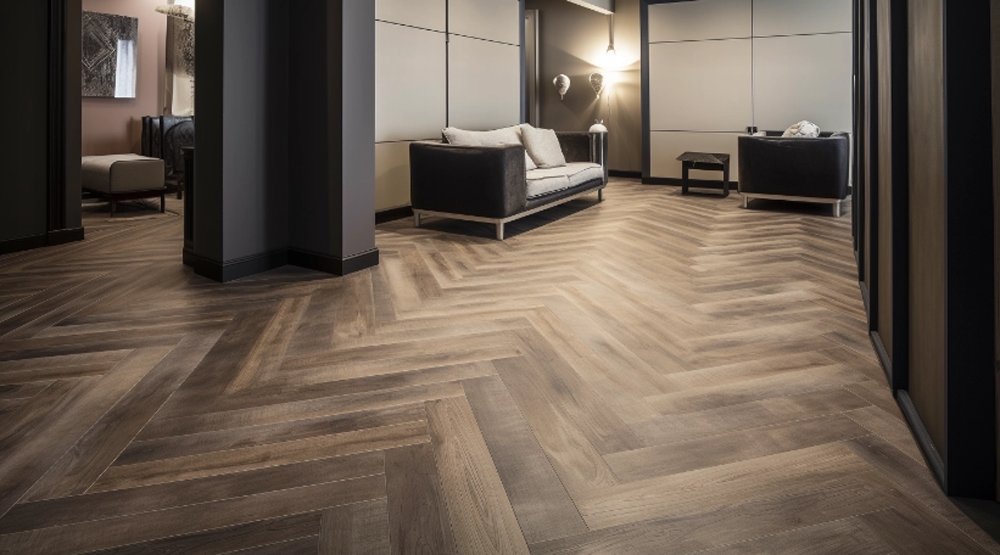
6. Considerations when choosing vinyl flooring.
A. Foot traffic and usage
While choosing vinyl flooring options, evaluating the amount of foot traffic and area consumption is essential. It is advisable to use a more durable wear layer for high-traffic areas such as entryways and corridors. Also, a water-resistant vinyl alternative is perfect for areas prone to spills or moisture, such as kitchens or bathrooms. Vinyl flooring is available in various thicknesses and durability ratings; therefore, selecting the appropriate selection for the intended space is vital.
B. Climate and environmental factors
Climate and environmental factors should also be considered when selecting vinyl flooring. For areas with extreme temperature changes or high humidity levels, choosing vinyl that can withstand these conditions without warping or buckling is imperative. Additionally, if eco-friendliness is a priority, many vinyl options are available that are made with recycled materials or are low in volatile organic compounds (VOCs). It’s important to research and compares different vinyl options to find the ideal fit for the space’s specific climate and environmental factors.
C. Design and aesthetic preferences
Design and aesthetic preferences are often major considerations when selecting vinyl flooring. Many options are available, from wood-look planks to intricate tile patterns to achieve the desired aesthetic. It’s important to consider factors such as color, pattern, and texture to ensure that the selected vinyl flooring complements the space’s overall design.
D. Budget and installation requirements
Finally, budget and installation requirements should also be considered when selecting vinyl flooring. While certain options may have a higher upfront cost, they may be more durable and low-maintenance in the long run, potentially saving money over time. Additionally, installation methods can vary, with some vinyl options allowing for DIY installation and others requiring professional installation. Researching and comparing different vinyl options is crucial to find the ideal fit for both budget and installation requirements.
| Factor | Description | Suggestions |
|---|---|---|
| Durability | Consider the wear layer thickness and overall construction of the flooring. Thicker wear layers and rigid core construction offer greater durability. | Choose a higher wear layer thickness and rigid core construction for areas with heavy foot traffic or potential for damage. |
| Water Resistance | Vinyl flooring is known for its water resistance, but some types may be more water-resistant than others. | Choose a 100% waterproof vinyl flooring type, such as SPC or WPC, for areas prone to moisture and spills, like bathrooms or kitchens. |
| Design Options | Vinyl flooring comes in a variety of colors, patterns, and textures. Some types may offer a more realistic look and feel than others. | Choose a vinyl flooring type that closely mimics the natural material you desire, such as LVT for a realistic tile or stone look, or LVP for a realistic hardwood look. |
| Installation | Vinyl flooring can be installed in several different ways, including glue-down, click-together, and peel-and-stick. Consider the ease of installation and your DIY skills when selecting a type. | Choose a type that is easy to install and matches your level of expertise. |
| Maintenance | Vinyl flooring is generally low-maintenance, but some types may require special care, such as waxing or polishing. | Choose a type that fits your desired level of maintenance and cleaning routine. |
Vinyl flooring is a great choice if a homeowner is looking for a low-cost alternative to hardwood, tile, or stone flooring. Kitchens, baths, and other high-traffic areas can benefit from its durability, low maintenance requirements, and resistance to dampness.


